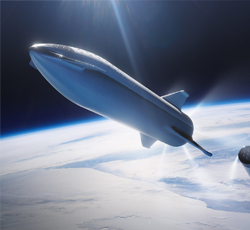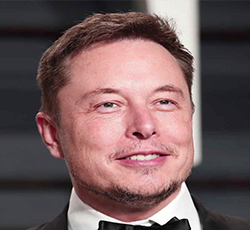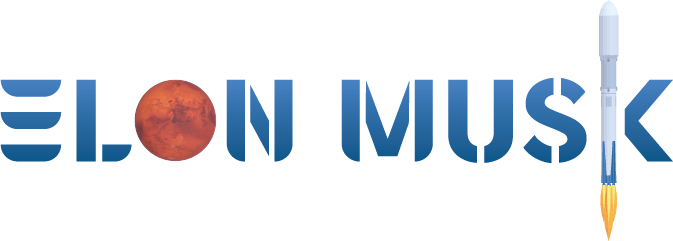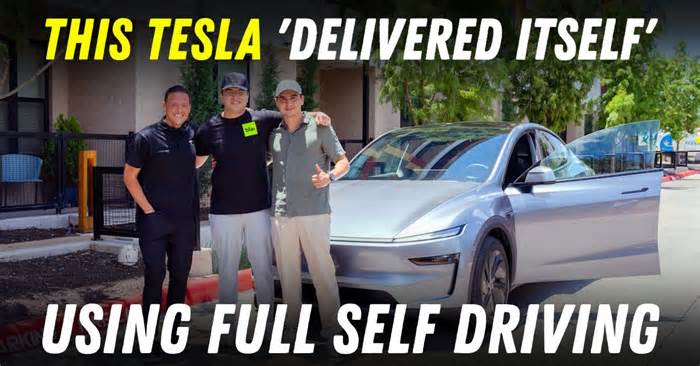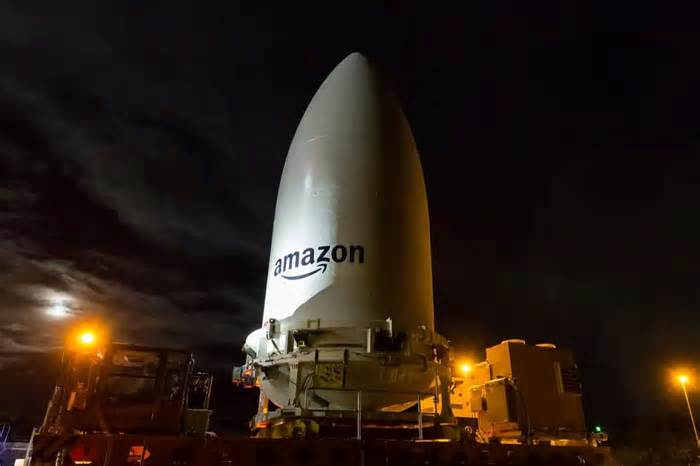
Tesla Has Big Plans in China
- by OilPrice.com
- Jun 28, 2025
- 0 Comments
- 0 Likes Flag 0 Of 5

By Felicity Bradstock - Jun 28, 2025, 12:00 PM CDT
Tesla is expanding its operations in China by signing an agreement to develop a grid-scale battery power plant to support the country's clean energy goals.
Beyond electric vehicles, Tesla is investing in autonomous driving systems, an energy-storage business, and humanoid robots.
The deal for the utility-scale battery storage system in China is thought to be worth $556 million, with Tesla competing against major battery manufacturers like CATL and BYD.
Tesla is moving forward with plans to develop new operations in China despite the ongoing trade war between the United States and China, and with uncertainty over tariffs. In June, Tesla signed an agreement to develop a grid-scale battery power plant in China to help provide the country with a stable supply of clean power for consumers and support its aims for a green transition. However, Tesla will be competing with some of the world’s biggest battery manufacturers for a market share, as it strives to break into new territory, beyond electric vehicle (EV) manufacturing.
The U.S.-based EV giant Tesla began as a Silicon Valley startup around two decades ago. Elon Musk joined the company as its chairman and principal funder in 2004, becoming its CEO in 2008. Tesla was viewed as a pioneer in the world of EVs, investing in a new way of driving when most automakers were only just beginning to float the idea. The EV firm dominated the U.S. and European EV market for several years, offering consumers a variety of wholly electric car models ahead of many of its much larger competitors.
The Tesla Model S, which went on sale in 2012, had sports car performance and a range of over 250 miles, at a time when most competitors were offering far slower EVs with a comparatively low range. By 2020, Tesla held a
60 percent share
of the U.S. EV market, a figure that fell to 38 percent in 2024, as hundreds of highly competitive EVs flooded the market.
However, over time, Tesla has become more than just an EV manufacturer. The company has invested in the development of autonomous driving systems, aiming to
deliver driverless “robotaxis”
to cities worldwide. It also has a burgeoning energy-storage business and is working on developing a humanoid robot, known as Optimus. While its EV business is faltering, as far more fully electric options enter the market, many from reputable automakers and at a lower cost, Tesla remains optimistic about its other projects.
In June, Tesla announced it had signed a deal to develop the largest grid-scale battery power plant of its kind in China. The utility-scale battery storage system will be used to balance the supply and demand of energy to the grid, helping to deliver a stable supply of renewable electricity to consumers. The deal is thought to be worth $556 million.
Tesla’s first battery factory in Shanghai has produced over 100 Megapacks – the batteries used for utility-scale deployment – in the first quarter of the year, according to Tesla. One Megapack can provide up to 1 MW of power for four hours. The company stated, “The grid-side energy storage power station is a ‘smart regulator’ for urban electricity, which can flexibly adjust grid resources.” The use of Megapacks is expected to boost energy security by ensuring that a stable supply of renewable electricity is delivered to consumers.
China has invested heavily in its solar and wind energy sectors for several decades to become the biggest renewable energy power in the world. The Asian giant once again broke records last year when it installed huge quantities of green energy. China’s installed
solar and wind power capacity climbed 45.2 percent and 18 percent, respectively,
in 2024, according to the National Energy Administration. There is now 886.67 GW of installed solar power, marking an increase from 609.49 GW in 2023, as well as a wind energy capacity of 520 GW. China hit its 2030 renewable energy capacity target in July last year, six years ahead of schedule.
China’s huge renewable energy capacity means that it is vital that the country install utility-scale battery storage at several of its major wind and solar farms to ensure that the clean energy supply is not limited only to the hours of the day in which the sun is shining and the wind is blowing. Battery storage will help China shift its reliance away from fossil fuels in the coming decades as it attempts to decarbonise the economy.
Tesla is competing against China’s CATL and the automaker BYD in developing battery storage. CATL currently holds around
40 percent of the global market share
for battery manufacturing, and the firm was previously expected to provide the battery cells and packs used in Tesla’s Megapacks. In addition, Tesla is taking a gamble as the project comes at a time when China is facing a trade war with the U.S., with President Trump having recently imposed high tariffs on Chinese imports.
China now has a grid-scale battery capacity of around 40 GW
. However, this will have to grow immensely in the coming years to help meet the country’s green transition aims. In addition, other countries around the world will be looking to expand their utility-scale battery installations, which could lead Tesla to export more batteries from China.
By Felicity Bradstock for Oilprice.com
More Top Reads From Oilprice.com
Please first to comment
Related Post
Stay Connected
Tweets by elonmuskTo get the latest tweets please make sure you are logged in on X on this browser.






 Energy
Energy